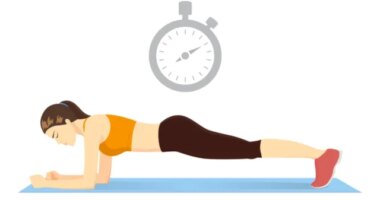
A physical therapist can help people with spasticity by developing stretching and strengthening programs designed to target specific muscle groups, Chris Venus, P.T., N.C.S., a board-certified neurologic clinical specialist at the University of Pittsburgh Medical Center (UPMC), tells SELF.
“Stretching temporarily lessens the amount of spasticity on a particular joint of a limb,” he says. In addition, strengthening the muscles that work in opposition to the muscles spasming may help “overpower” the effects of spasticity.
Dr. Diaz adds that passive or manual stretching— that means applying external force onto a muscle you want to stretch—may be recommended when there is significant muscle weakness.
Electrical therapy can also be used to help reduce muscle stiffness and pain. Functional electrical stimulation (FES) and transcutaneous electrical nerve stimulation (TENS) are commonly used in physical therapy to treat spasticity, says Dr. Diaz. According to a 2018 study published in the Journal of Spinal Cord Medicine, just one session of FES or TENS may help reduce spasticity symptoms for about four hours.2
Finally, techniques like ice massage, ice baths, and coolant sprays may help ease spastic muscles, if only in the short term.3 Another technique used in physical therapy for spasticity is hydrotherapy. According to Dr. Diaz, the anti-gravity effect of water provides support and helps facilitate muscle movement.
3. Occupational therapy can help you perform everyday tasks.
OK, so we know that physical therapy can help reduce muscular stiffness, discomfort, and improve range of motion. Occupational therapy compliments all of those benefits, says Dr. Diaz, with a focus on fine motor skills needed to do day-to-day functions like eating, dressing, bathing, going to the bathroom, household chores, playing Wordle (just us?), and going to work.
“An occupational therapist will assess how spasticity affects a person’s functional abilities and develop an individualized plan to improve function,” explains Dr. Diaz. This may include one or more of the following:
READ RELATED: Cheryl Burke reveals she attended her first Alcoholics Anonymous meeting and fears 'relapsing'
- Practicing movements involved in daily tasks
- Relearning performance tasks to avoid spastic movements
- Adapting home or work environment to make tasks easier
- Recommending assistive devices
- Engaging in speech therapy
4. Splinting, casting, and bracing for support are also options.
Splints, casts, and braces are devices that are designed to help control body motions, alter the shape of body tissues, and improve range of motion and flexibility.
Orthotics and splints are rigid or semi-rigid devices that provide support or restrict movement.
Splints can help support weak muscles and maintain the limb in a normal position to prevent contracture, which is the tightening of muscles, tendons, joints, or other tissues.
Braces and casts can help maintain and sometimes improve flexibility and range of motion in cases of increased spasticity. However, Venus says, these must be combined with an appropriate stretching program to be effective. According to Dr. Diaz, serial casts—basically a cast that forces the muscle into a stretched position—can be used to help lengthen and straighten contracted muscles, which may improve the range of movement in a joint that is already contracted.
All of these devices should be measured and fitted by your therapist for best performance, says Venus, because an ill-fitting brace can actually have the opposite effect and increase spasticity.
5. Staying active is a biggie when it comes to keeping spasticity in check.
Getting regular exercise is essential for physical and mental wellness, and engaging in the right activities that complement your overall spasticity treatment plan and diagnosis is key. That’s why it’s important to work closely with your doctor to design an exercise routine outside of your regular physical and occupational therapy program. Just know that you don’t have to train for a marathon to reap the benefits of regular exercise, it could be as simple as practicing some gentle yoga moves.
Source: SELF










